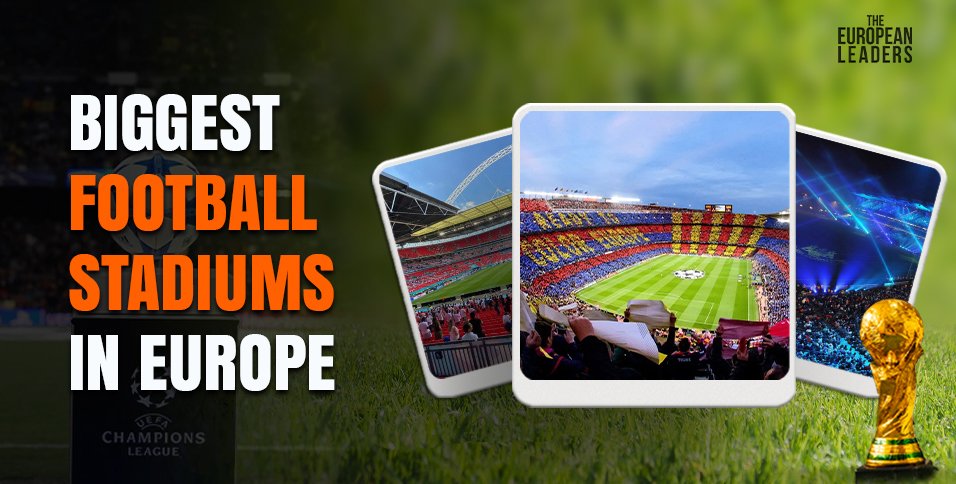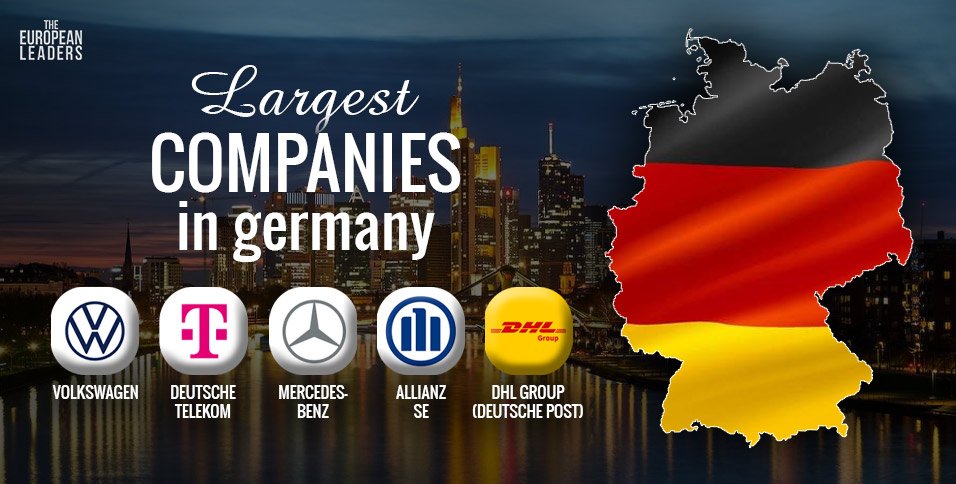Do you know that Europe is the key player in modernizing a game that has roots in Asia? It’s none other than the most popular sport in the world, Football (also called soccer). Cherished at the heart of Europe, Football has seen many ups and downs. It has had many touch-ups and plenty of changes in rules as the game progresses. But without one thing, the game is incomplete. The stadium. The ground. So this blog is not about the game, but the shelter of the game. So tie your shoelaces tight and get ready to run around at the biggest football stadiums in Europe.
These biggest football stadiums in Europe have always given their heart to this sport. Moreover, they unite all casts and races. They cheer for one big game of a ball, passing, and getting kicked to share tears of joy or heartbreak.
Now it’s time we tour the biggest football stadiums in Eupore based on their capacity.
1. Camp Nou/Spotify Camp Now
- Capacity: 99,354 (ongoing expansion up to 104,000)
- Location: Barcelona, Spain
- Inaugural game played: Barcelona vs Warsaw XI (September 24, 1957)
- The home ground of which team: FC Barcelona
Residing in the vibrant city of Barcelona, Camp Nou is more than just the biggest football stadiums in Spain—it’s a modern marvel of architecture and functionality.
Designed by the renowned architects Francesc Mitjans Miró and Josep Soteras Mauri, this horseshoe-shaped colossus spans 5,000 square meters (592,000 square feet); moreover, it houses an array of state-of-the-art facilities.
However, the stadium does not only open its gate for the sport. There are many other things inside as well, ranging from the FC Barcelona Museum to VIP lounges, dedicated press rooms, television studios, a Sports Medicine Centre, and an operational control unit. Consequently, Camp Nou is a multifunctional hub. It even has a chapel next to the changing rooms, blending spirituality with sportsmanship.
Opened on September 24, 1957, with a friendly match, Camp Nou replaced the club’s previous stadium, Les Corts. Over the years, it has, consequently, hosted monumental events like the 1982 FIFA World Cup and the 1992 Olympic Games.
This is not just the biggest stadium in Europe, but it has also seen the highest goal tally in a single game. The game of Barcelona against Basconia in the Copa del Rey on April 8, 1962. The game was a pure show of dominance by Barcelona winning the game with a massive margin of 10-1.
Currently, Camp Nou is undergoing extensive renovations to modernize its facilities and increase its capacity to 104,000 by 2026. These upgrades focus on sustainability, incorporating solar panels and rainwater collection systems.
2. Wembley Stadium
- Capacity: 90,000
- Location: Wembley, London
- Inaugural game played: Bolton Wanderers vs West Ham United (April 28, 1923)
- The home ground of which team: None of the football clubs
Do you know that Wembley Stadium, with its iconic bowl-shaped structure and towering 133-meter-high arch, is more than just any other stadium? It’s a marvel of modern engineering and a symbol of England’s rich football heritage.
This arch, the longest single-span roof structure in the world, not only defines the stadium’s skyline but also represents the strength and unity of the sport. Among the biggest football stadiums in Europe, Wembley stands out for its design and historical significance.
The old Wembley, with a capacity of around 125,000, was a cherished landmark. It was the site of legendary events like the 1923 FA Cup Final, famously known as the “White Horse Final.” However, due to age and structural issues, the old Wembley was demolished in 2002. This made way for a new chapter in its history, placing it among the biggest football stadiums that have evolved along with the game.
Designed by Sir Norman Foster, the new Wembley, which opened in 2007, carries forward this legacy. Additionally, it has a partially retractable roof for optimal spectator comfort. The stadium’s round shape, with a circumference of 3,280 feet and a field size of 115 by 74 yards, ensures an unparalleled viewing experience, keeping it among the biggest football stadiums with advanced features.
Remember England’s 1966 World Cup victory? Wembley was the backdrop for that unforgettable triumph. Today, it hosts record-breaking crowds, proving that Wembley is more than a stadium—it’s a cathedral of football, embodying the spirit of the biggest football stadiums in Europe.
3. Croke Park
- Capacity: 82,300
- Location: Dublin, Ireland
- Inaugural game played: Republic of Ireland vs Wales (March 24, 2007)
- The home ground of which team: None of the football clubs
Croke Park, the largest stadium in Ireland ranks third as the biggest football stadiums in Europe, boasting a seating capacity of 82,300. Its expansive playing field spans 145 meters in length and 88 meters in width, covering around 16 acres.
Renowned for its durable soil pitch, the stadium ensures top-notch playing conditions throughout the year. Moreover, blending modern facilities with classic Gaelic design, Croke Park stands as a premier venue.
As one of the biggest football stadiums in Europe, this one offers various amenities for a top-notch visitor experience. For instance, these include free car parking, comprehensive accessibility services with wheelchair options, family-friendly baby-changing stations, and readily available medical assistance. Moreover, fans benefit from strategically placed water fountains providing free drinking water.
Croke Park’s record does not only get settled as the biggest football stadiums. This one has also seen the highest number of goals in a match nine, achieved during the 2022 fixture between Wicklow and Laois, showcasing its electrifying atmosphere.
The stadium’s rich history includes “Bloody Sunday” on November 21, 1920, when 14 people were tragically killed by British forces during a football match. Another notable event was the opening ceremony of the Special Olympics World Summer Games in 2003.
The first documented football match at Croke Park occurred on March 24, 2007, during a European Championship Qualifier between the Republic of Ireland and Wales. Stephen Ireland’s decisive goal led to a 1-0 victory before 72,539 spectators, adding to the stadium’s storied legacy.
4. Signal Iduna Park
- Capacity: 81,365
- Location: Dortmund, Germany
- Inaugural game played: Borussia Dortmund vs. Schalke 04 (April 2, 1974)
- The home ground of which team: Borussia Dortmund
Signal Iduna Park, located in Dortmund, is one of the biggest football stadiums in Europe. Originally known as Westfalenstadion, it has become a landmark of football excellence. Local fans fondly call it “The Temple,” praising its intense atmosphere during matches.
Built for the 1974 FIFA World Cup, Signal Iduna Park has remained a top destination for football enthusiasts. The stadium’s first Bundesliga game took place on April 2, 1976, with Bochum hosting Schalke, while Dortmund was relegated at the time.
Initially, this widely popular one of the biggest football stadiums across the continent was designed to accommodate 54,000 spectators, the stadium underwent significant expansions in the 1990s.
These upgrades increased its capacity and introduced the “Yellow Wall,” a standing terrace for 25,000 fans, the largest in Europe. The stadium’s steep stands and vibrant yellow pylons enhance its striking appearance. Additionally, it features undersoil heating, ensuring playability in colder weather.
Signal Iduna Park has hosted major events, including 2006 FIFA World Cup matches and the 2001 UEFA Cup final between Liverpool and Alaves. Renamed in 2005 due to a sponsorship deal, it continues to uphold international standards. Its reputation as an elite venue remains unchallenged, showcasing the best of football culture and infrastructure.
5. Santiago Bernabéu Stadium
- Capacity: 81,044
- Location: Madrid, Spain
- Inaugural game played: Real Madrid and Osasuna (December 14, 1947)
- The home ground of which team: Real Madrid Club de Fútbol/Real Madrid FC
The Santiago Bernabéu Stadium shines as a modern architectural marvel, with its sleek double-curved stainless steel louvers. These louvers provide natural ventilation and a unique sculptural look. Moreover, recently renovated, this iconic venue now accommodates 83,000 spectators, serving as a prime location for various events beyond football.
The field, measuring 105 m × 68 m, utilizes Mixto Hybrid Grass Technology to maintain optimal playing conditions. Consequently, this innovation is one reason why it ranks among the biggest football stadiums.
Inside, the stadium is a beacon of luxury and convenience. It features over 240 VIP boxes, private hospitality areas, numerous restaurants, bars, and lounges. Furthermore, visitors can enjoy a large club store, shopping areas, and a trophy room celebrating Real Madrid’s many triumphs. Enhanced seating arrangements and accessibility upgrades ensure a comfortable experience for everyone.
Built between 1945 and 1947, and originally named Nuevo Estadio Chamartín, it was renamed in 1955 to honor Santiago Bernabéu, the legendary club president. Moreover, it has hosted landmark events like the 1982 FIFA World Cup and several UEFA Champions League finals, securing its place among the biggest football stadiums in Europe.
The ongoing renovations, expected to be finished by the end of 2024, include a retractable roof to increase versatility for large-scale events. Consequently, this upgrade reinforces its reputation as one of the biggest football stadiums.
Notable moments include the 1960 European Cup final, where Real Madrid triumphed 7-3 against Eintracht Frankfurt. Other memorable events are Real Madrid’s 1957 European Cup win and Spain’s 1964 European Nations’ Cup victory. The 2018 Copa Libertadores final, hosted outside South America for the first time, further cements its legendary status.
The Final Kick
As all games come to an end, it’s time for us to have this one final kick before we bid farewell, and thank you for taking the time to read this blog. As you have seen, the game is not just related to the players. Yes, the players promote the game, but the stadium holds the story to narrate for the future.
As the saying goes, “The bigger the better.” The same goes with this sport and these biggest football stadiums always do better. A better job of telling the story. Better to write the story, and better to wait for the upcoming stories.
So that’s it from our end soccer heads, but here’s a quick request and a small message for the die-heart fans. This is not the end of the list of the biggest stadiums in Europe, there are many others. But it’s not just Europe.
The game is celebrated all across the world and it’s our responsibility to hold on to the spirit of the game. Because of the fans like us, the game gets more exciting. And keep all your rivalries inside the game, don’t take it outside the stadium. That’s not what this game preaches us.
So, celebrate the game, worship the players, and let’s continue to support our teams till the end of the world!








